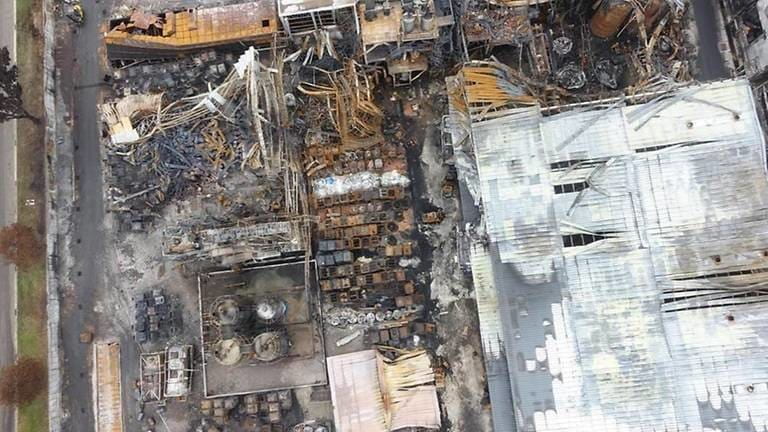The end of the semester is coming up, and as I draw my blog to a close, I suppose it is fitting to discuss the cutting-edge of water treatment techniques in Singapore.

Innovation in Water Singapore Volume 11 by PUB. Source: https://www.pub.gov.sg/Documents/Issue%2011_Innovation%20in%20Water,%20Singapore_Full%20PDF.pdf
Innovation in Water Singapore is a yearly publication by PUB that highlights research and developments in water treatment technology that I would recommend you check out!
The 2018 and 2019 issues both featured algal blooming as a subject of concern and for good reason. Even without considering excessive nutrient loading from industries, a warming urban environment (Roth & Chow, 2012) still makes freshwater bodies an inviting place for algae to proliferate (Lai, Chua, Chan, 2018). One of our national taps source water from these water bodies; and the presence of algal blooms clog up NEWater’s signature reverse osmosis (RO) membranes, adding to RO’s already high energy usage and membrane maintenance (Ooi et al., 2019). I don’t think murky green waterways littered with dead fish (Ooi et al., 2019) would be very appealing, wouldn’t you agree?

Algal blooming at Kraji Reservoir. Photo by an ST reader Source: https://www.straitstimes.com/singapore/environment/algae-at-kranji-reservoir-turns-waters-a-murky-green-pub-says-no-cause-for
In our discussions of eutrophication, treatment measures for algal blooms mostly revolved around reductions in nutrient loading. Alternatively, the 2018 issue showcased ultrasonic disinfection, where a pilot study was conducted on the Serangoon Reservoir (Lai et al., 2018). Its principle of operation is the exciting part: where cavitation bubbles form and implode, creating an environment where water decomposes and forms biocidal hydroxyl radicals that eliminate algal cells (Joyce, Wu, & Mason, 2010).
Operating like a floating fish tank filter, closed water systems like a catchment could conceivably be protected from algal blooms (Lai et al, 2018). Conversely, it would be a lost cause in open waters where desalination plants draw seawater from. Ultimately, the best solution lies in managing the growth factors of algae: nutrients and warmth. That would mean dealing with warming seas, urban heating, and anthropogenic nutrient inputs: each is a tall order in their own right.
Concerning last week’s post, PUB’s 2017 issue indicates that they already dabbled into Membrane Contactor technology! If you have not read last week’s post, Membrane Contactors are one of many liquid-phase extraction technologies, which also encompasses RO. In particular, Membrane Contactors offer opportunities for resource recovery: in this case, the recovery of methane from anaerobic bioreactors (Wang, Bae, 2017). Unlike VOC recovery which features a liquid extractor, either the property of pressure gradient force on gases is exploited by using a vacuum, or carrier gas(es) with high affinity for biogas are utilized.
This adds on to Ryan’s comment about political will for the implementation of such technologies in Singapore. The realisation hit me that there is a strong political will for the implementation of novel and critical technologies in wastewater treatment; just not in the places that need it the most! If this project tenure was awarded to point-source emitters of high-VOC wastewaters, widespread industrial adoption of wastewater resource-recovery and treatment technologies could have begun years ago!

Could the 2017 ECOSWM fire have been avoided with PUB’s research involvement? Source: https://www.channelnewsasia.com/news/singapore/tuas-plant-fire-eco-special-waste-management-fined-mom-11848164
While it is invigorating to know that such technological advancements are taking place, the reach of Singapore’s political will is not yet enough to provide holistic solutions to our water problems. We already have the research, now its time to implement them where they are needed.
References
Joyce, E. M., Wu, X., & Mason, T. J. (2010). Effect of ultrasonic frequency and power on algae suspensions. Journal of Environmental Science and Health – Part A Toxic/Hazardous Substances and Environmental Engineering. https://doi.org/10.1080/10934521003709065
Lai C. L., Chua C. Y. , Chan W. S. (2018). Managing microalgae growth with ultra-low frequency technology. Innovation in Water Singapore, Vol 10, 27. Retrieved from https://www.pub.gov.sg/Documents/Innovation_in_Water_Singapore_Vol10.pdf
Ooi S. K., Babovic V., Navarro L. M., Yim S. S. P., Wang M. Y. | NUS; Xia L. J., Gao R. M., Sim M., Mahadevan A. | PUB;
Tay S. H. X. | H2i (formerly NUS) (2019). An algal proliferation prediction system for Singapore’s coastal waters. Innovation in Water Singapore, Vol 11, 40. Retrieved from https://www.pub.gov.sg/Documents/Issue%2011_Innovation%20in%20Water,%20Singapore_Full%20PDF.pdf
Roth, M., & Chow, W. T. L. (2012). A historical review and assessment of urban heat island research in Singapore. Singapore Journal of Tropical Geography. https://doi.org/10.1111/sjtg.12003
Wang R., Bae T. H., Y. Zhang (2017). Maximising biogas recovery for used water treatment. Innovation in Water Singapore, Vol 9, 27. Retrieved from https://www.pub.gov.sg/Documents/PUB_InnovationinWater_Issue9.pdf